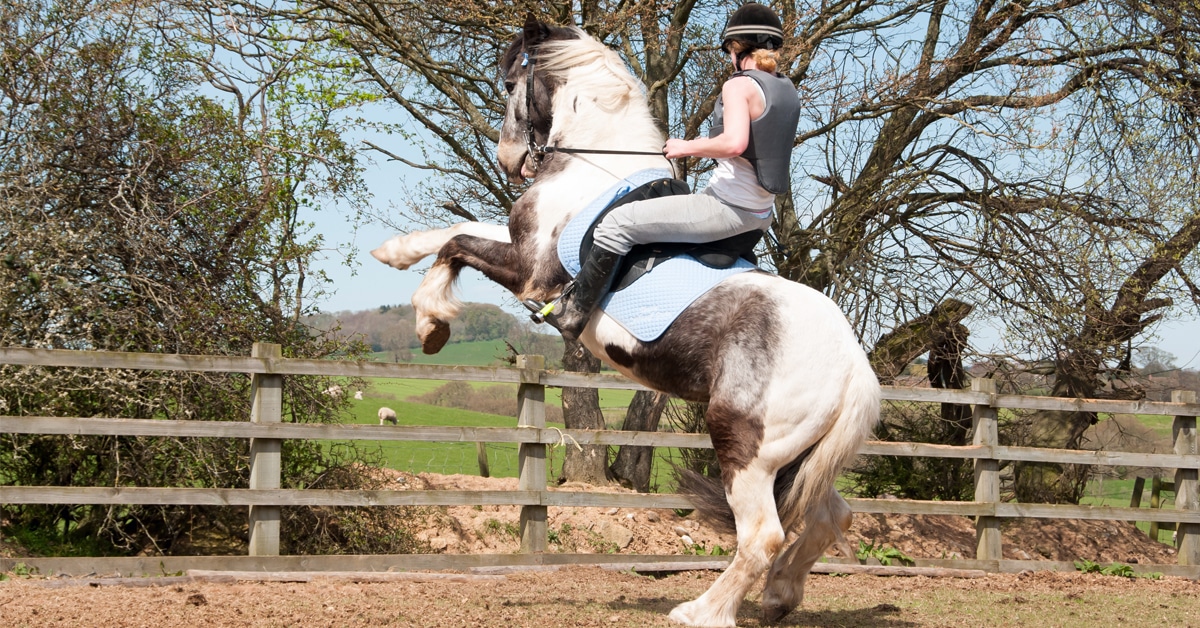Balking, sulling, napping. Terminology varies across riding disciplines, yet the behaviour is familiar – your horse’s “go” button is stuck.
As a judge, I see it in the show ring. A horse may dig in his toes at the trail bridge, stall on approach to a jump or refuse to enter the ring altogether. He may plant his feet at the wash stall or be unwilling to exit the pasture gate to leave his herd mates.

A balking horse tends to have a neutral expression with his ears back, like this fellow. A spooking horse, however, will generally be on high alert, muscles tense, ears pricked forward.
The balking horse is a different version of stuck than the spooking horse. It’s important that we recognize the distinctions to handle it appropriately. The balking horse may veer off the direction of travel – his head pointing in your desired direction while his body derails sideways off the track. Or he may lock up altogether, seemingly impervious to your urging. Serious balking is spinning around or even rearing.

